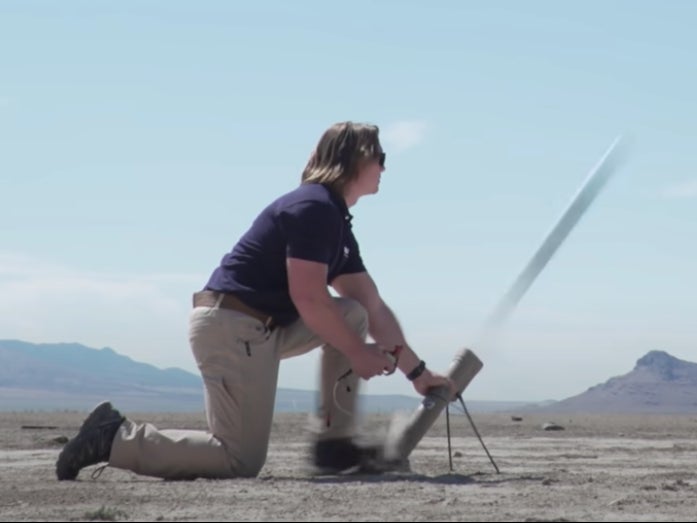
So-called “kamikaze drones” are believed to lie in the arsenals of both sides in Russia’s war on Ukraine, a conflict in which Unmanned Aerial Vehicles (UAVs) are playing a large role.
These drones are said by Kyiv to have been used in Russian attacks which killed 19 people last week, before a widespread and fatal assault on the Ukrainian capital and other cities on Monday sparked international condemnation.
A host of EU nations have suggested that fresh sanctions could be levied against Iran – after Ukraine reported a spate of Russian attacks with Iranian-made Shahed-136 drones. Tehran denies supplying the drones to Russia, while the Kremlin has not commented.
And in the immediate weeks after Vladimir Putin launched Russia’s invasion, the United States was also reported to have sent Switchblade “kamikaze” drones to bolster Kyiv’s defence efforts.
The drones are dubbed with the term “kamikaze” – the suicidal tactic employed by Japanese fighter pilots during the Second World War – by military officials because they can be packed with explosives and flown directly into a target.
The drone, of which hundreds are believed to have been sought from Iran by Moscow, is then destroyed upon impact.
They can be carried in a soldier’s backpack and launched in a matter of minutes to scope out enemy positions within a range of vast range of several miles at speeds of up to around 60 miles per hour.
The UAVs are able to loiter while their operator determines the most effective spot to strike, and soldiers can fine-tune the angle of attack to cause maximum damage, according to the vice-president of AeroVironment, a firm handed a $2.2 million contract by the US last month for 10 new drones for Ukraine.
Ukraine has so far used a model known as Switchblade 300s to hit “soft-skin” targets, such as vehicles carrying fuel and troops, machine gun nests and trench positions.
But AeroVironment’s Charlie Dean told Defence News last week that the delivery of 10 new Switchblade 600s will see Kyiv handed a “tank-killer” with a warhead as powerful as the Javelin anti-tank missiles credited by some as a key aspect of Ukraine’s military successes against its larger neighbour.
Drones – and anti-drone devices – are so vital to the war effort of both countries that Ukraine has launched a fundraising campaign called “the army of drones”, while the identity of their operators is said to be kept particularly secret because of the target placed on them due to their crucial role on the battlefield.
“Drones are as important to our army as our eyes,” a Ukrainian drone commander based in Donetsk told The Independent earlier this month. “Even the regular commercial drones can be game-changing. They mean we can attack with precision using a fraction of the artillery ammo. It means even though we are outnumbered we don’t feel like it.”
The “kamikaze” devices have also been used to inflict significant damage by Russia in recent months, Ukrainian commanders claim.

Their involvement has come further to the fore this week, after Moscow launched an alleged wave of UAV attacks on Kyiv and various other Ukrainian cities, killing at least three people.
In the hours after the early-morning attacks, Russia’s defence ministry said it had carried out a large-scale assault on military targets and energy infrastructure across Ukraine using high-precision weapons, claiming to have hit “all designated targets”.
Kyiv’s mayor Vitali Klitschko said one person in the capital had been killed and another trapped under rubble as the explosions set off air raid sirens. Several residential buildings also came under attack, he alleged.
Ukraine’s air force claimed to have shot down 37 drones, which it said accounted for roughly 85 per cent of the kamikaze drones launched in the bombardment on Monday.
It came days after The Independent reported concerns among Ukrainian defence officials that Russia was launching multiple drones at the same time to “swarm” their air defence systems, effectively confusing them and rendering them inactive.
The new United Nations human rights chief, Volker Turk, warned after Monday’s bombardment that drone attacks on civilians had to stop, while several European foreign ministers called for fresh sanctions against Iran if Russia’s use of its drones was proven.







